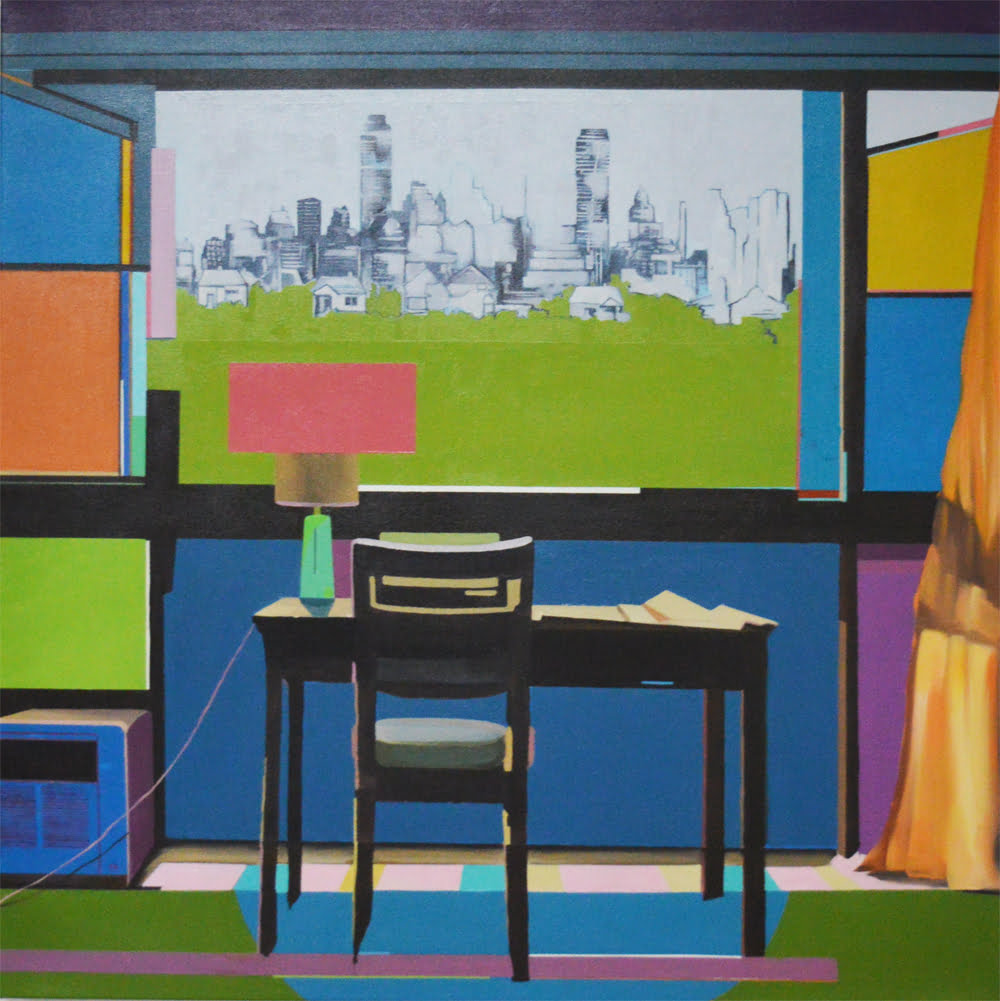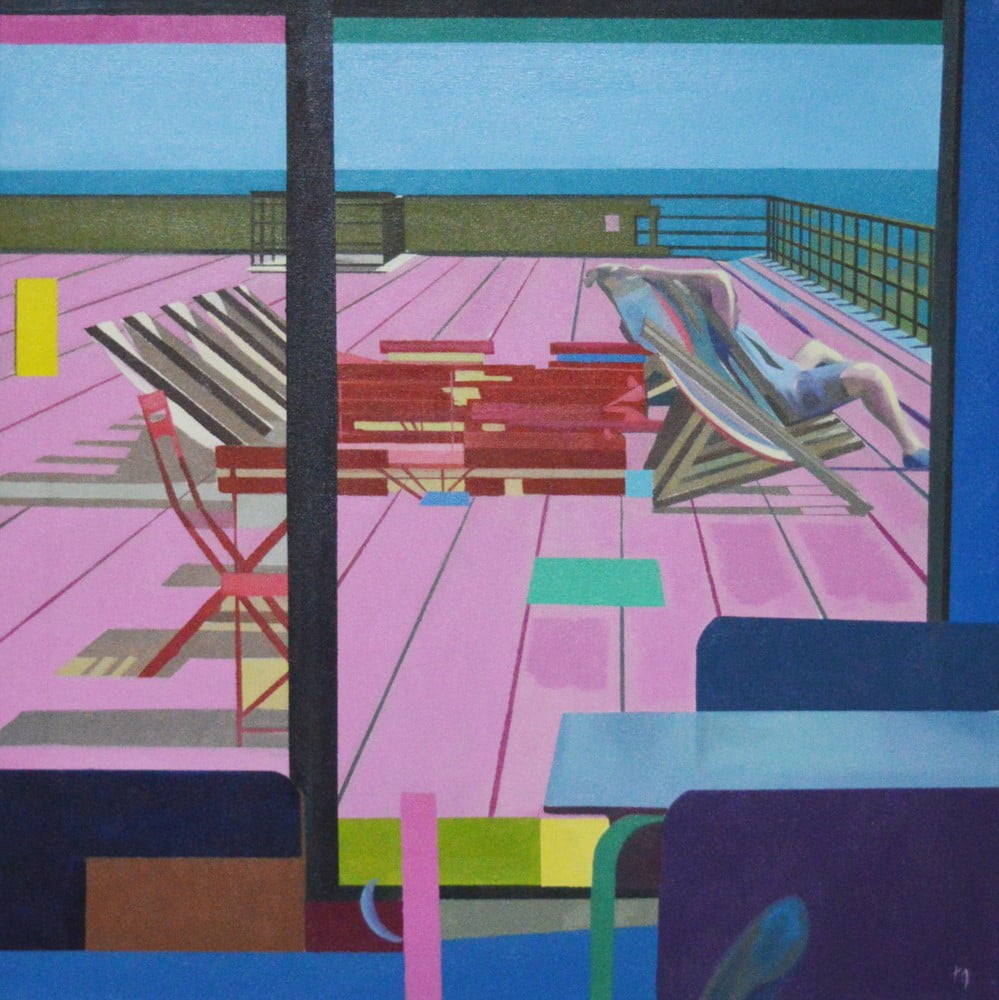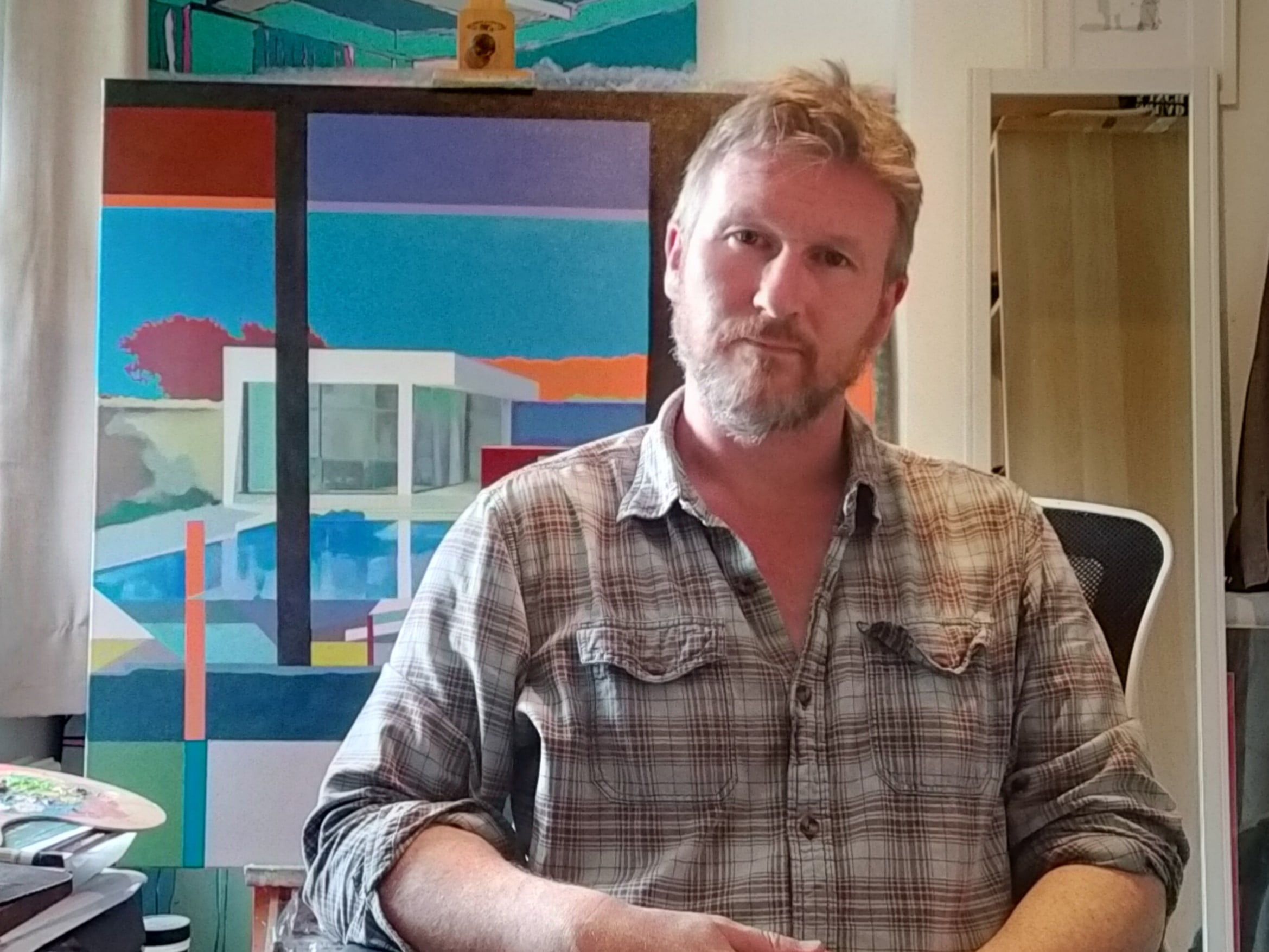- Structure and shape can be the building blocks of any great work of art, however the composition does not always have to be representational. :
Where do you find inspiration?
Mostly from the real world. I take a lot of photos, of both exterior and interior spaces. As diverse as Indonesian hotel rooms to National Trust houses. If there’s good light and I see an interesting composition, I’ll try to capture it, then reframe and manipulate it for my own artistic pursuits. For many of my room paintings, I was fixated on interior design from different decades of the 20th century, so I’d go online for inspiration and sketch some ideas. But you always fall back on the work of great painters that you’ve absorbed over the years too.
How has your practice changed over time?
I painted landscapes for a long time that were tonally quite dark. I come from Northern Ireland where the predominant colours that have stayed with me over the years are the deep greens of the countryside, the burnt orange of street lights at night and the dishwater grey of a heavy sky. So I guess my later work has been something of a reaction to that. I’ve moved toward bright, bold, flat colours, away from darkness.

‘Harry’s House’

‘De La Warr Sunday’
Who are your biggest artistic influences?
In no particular order: Hockney, Matisse, Patrick Caulfield, Milton Avery, Richard Diebenkorn, Neil Stokoe – and one particular master from my childhood, Herge.
What’s the purpose or goal of your work?
The purpose is an exploration and fascination with light, colour matching, the interplay between geometric and organic forms, figurative elements slipping into abstraction, a process of writing out the painterly to something close to digital art, then reworking that back onto the canvas with traditional methods. I want to see where it takes me. The goal is probably something to do with identity, a human need to say: “Here I am. This is me. This is what I do.”
Describe a real-life situation that has had a direct impact on your work?
I met my wife, who knows a thing or two about art. She curates away (if that’s a phrase) my worst instincts.
What’s the best piece of advice you have ever been given?
In life, keep going. In painting, know when to stop.


YOUR COMMENT